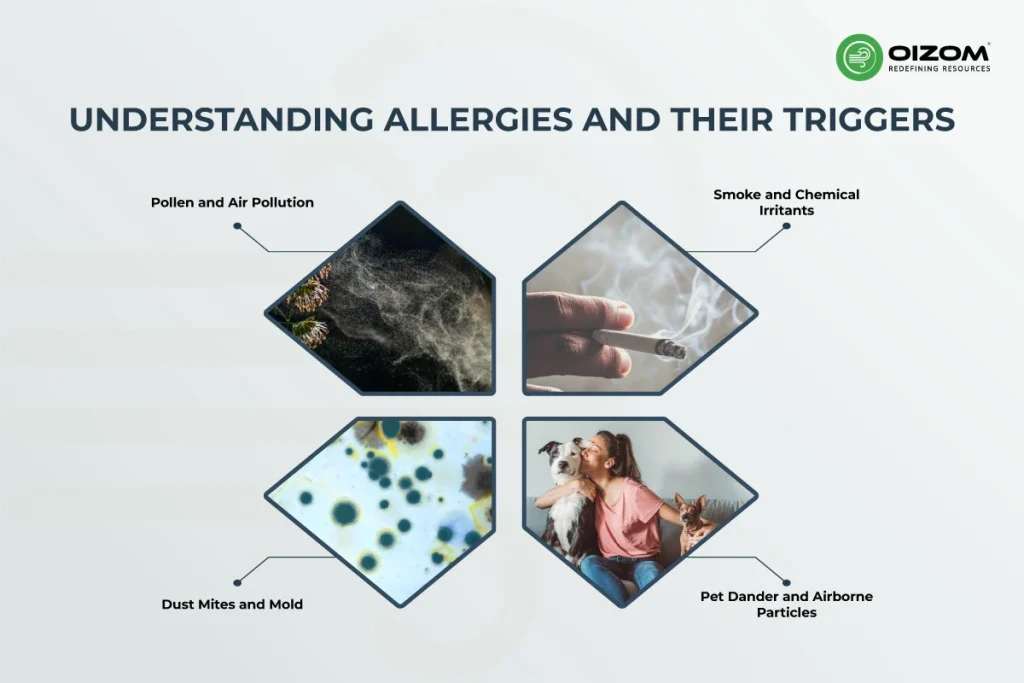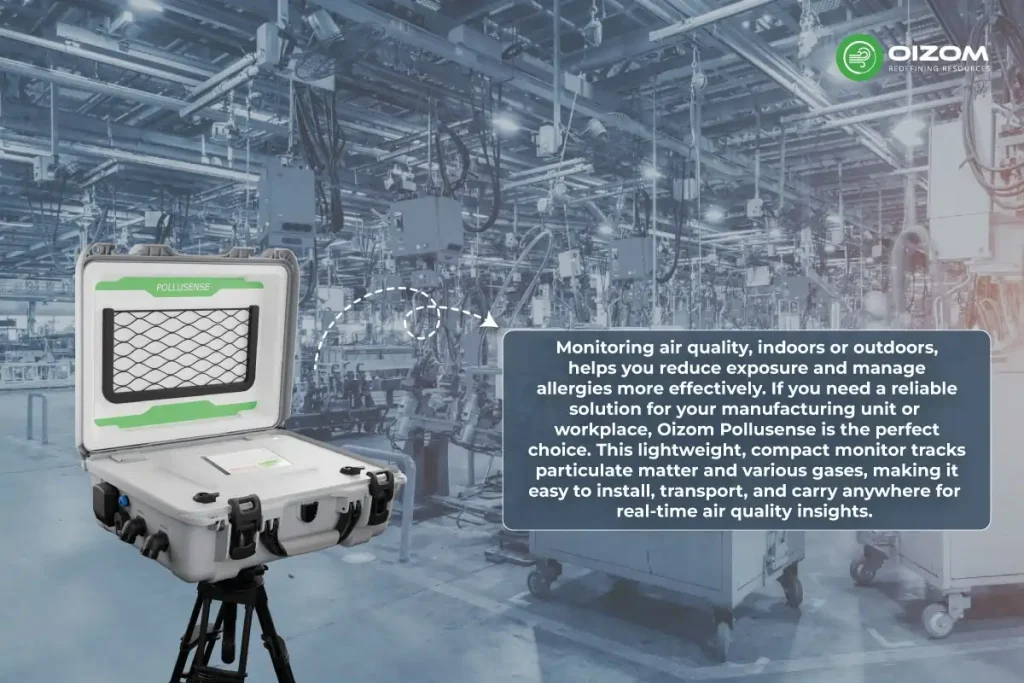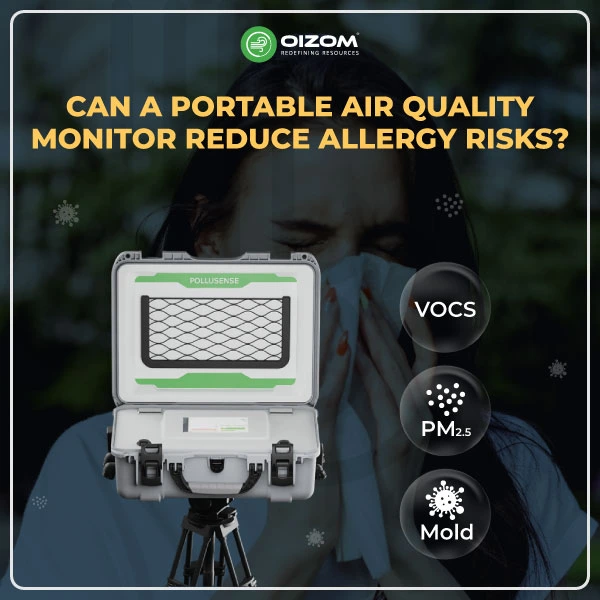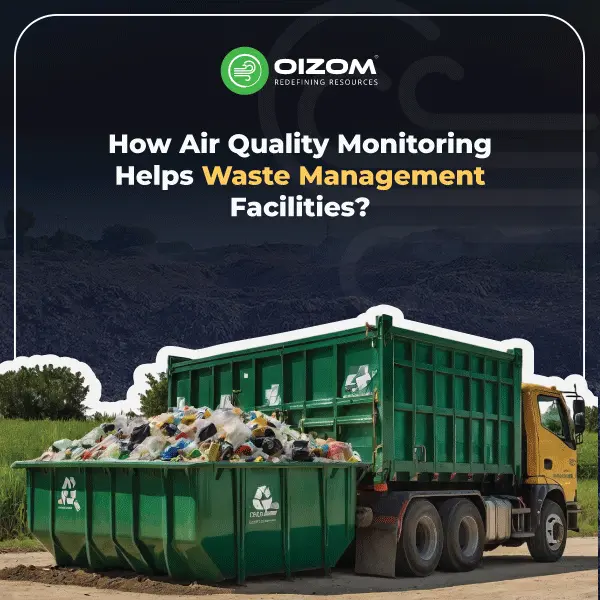Summary of Blog
Airborne pollutants such as PM2.5, PM10, VOCs, and NO₂, exacerbate allergies by irritating the respiratory system and binding to allergens like pollen and dust mites. Portable air quality monitors use advanced sensor technology to measure these pollutants in real-time, helping allergy sufferers identify triggers before symptoms arise.
These monitors detect particulate matter, gaseous pollutants, and humidity levels, providing actionable insights via smartphone apps. Some advanced models integrate with air purifiers and HVAC systems, automating air filtration for improved indoor air quality. Research shows that pollution makes pollen more aggressive, causing stronger allergic reactions, highlighting the need to monitor air quality.
However, consumer-grade monitors have accuracy limitations, battery constraints, and may not differentiate between specific allergens. While they do not eliminate allergens, they enable proactive allergy management through real-time data.
The future of air monitoring includes AI-driven allergen detection, smart home automation, and wearable sensors for real-time allergy control. Investing in a high-quality portable monitor can help users optimize indoor environments, reduce allergen exposure, and breathe easier.
Can a Portable Air Quality Monitor Reduce Allergy Risks?
Do we really know what’s in the air we breathe every day? Probably not. We all recognize pollution when we see factory smoke or car exhaust, but what about the invisible pollutants floating around us? Have you ever noticed your allergies acting up in certain places? The air you breathe might be the reason. As someone who deals with allergies myself, I’ve found that knowing what’s in the air around me makes a big difference. Let me tell you a small story, Last spring, my allergies hit harder than ever. I couldn’t figure out why, until I started tracking my indoor air quality. That’s when I discovered my air purifier wasn’t working as effectively as I thought, and pollen levels inside my house were high.
Were you aware of this? According to the Environmental Protection Agency, Americans spend about 90 percent of their time indoors, where the concentrations of some pollutants are up to 5 times higher than typical outdoor concentrations. That’s where Portable air quality monitors come in. These small devices can help track things like pollen, dust, and mold in the air, which triggers allergy symptoms. These monitors use sensors to detect tiny particles and send the information right to your phone.
The technology is straightforward but effective. These devices measure particles of different sizes (PM2.5 and PM10) that can cause problems for allergy sufferers. Some newer monitors can even predict when air quality might get worse and work with air purifiers to clean your space automatically. But the big question is: can these monitors actually help reduce your allergy problems? Let’s look at how these simple tools might make breathing easier for allergy sufferers like us. Let’s explore.
How Poor Air Quality Impacts Allergies?
Air pollution doesn’t just harm the environment. It can make allergy symptoms worse and more persistent. If you’ve ever noticed your allergies become more intense near busy roads, factories, or wildfire smoke, that’s because poor air quality plays a major role in triggering reactions.
What’s in the air that affects allergies? Pollutants like PM2.5, PM10, nitrogen dioxide (NO₂), ozone (O₃), and volatile organic compounds (VOCs) don’t cause allergies directly, but they irritate your respiratory system, making you more sensitive to allergens like pollen, dust mites, and mold.
Here’s how: Fine particulate matter (PM2.5) damages the protective lining in your airways, allowing allergens to penetrate deeper and cause inflammation. Worse, pollution binds to allergens, making them even more potent. Research published in the Journal of Allergy and Clinical Immunology found that pollen bound to traffic-related pollutants triggered stronger immune responses compared to pollen alone.
Climate change is also making allergies worse; higher carbon dioxide levels lead to increased pollen production, and rising temperatures extend allergy seasons. This means more exposure for longer periods, making symptoms harder to manage.
For those with asthma or chronic allergies, this creates a dangerous cycle; each exposure weakens the body’s defenses, making future reactions even more severe. Understanding air quality isn’t just about pollution; it’s about protecting your health.
Understanding Allergies and Their Triggers
If you suffer from allergies, air quality plays a bigger role than you might think. Pollen, pollution, smoke, and indoor allergens all contribute to becoming more intense, making symptoms like sneezing, coughing, and itchy eyes worse. Understanding these triggers can help you take steps to breathe easier.

Pollen and Air Pollution
Pollen is a top allergy trigger, and its impact depends on air quality. When the air is stagnant, pollen levels rise, leading to more intense symptoms. Pollution makes it even worse; studies show that pollen exposed to high pollution becomes more aggressive, triggering stronger allergic reactions.
Smoke and Chemical Irritants
Smoke and chemicals in the air can severely irritate the respiratory system. Cigarette smoke, wildfire smoke, and household chemicals release tiny particles and volatile organic compounds (VOCs) that worsen allergies and asthma. During wildfire season, it’s especially important to monitor air quality and limit exposure.
Want to know what caused the recent LA wildfire in January 2025? Read our latest blog, “Wildfires and Air Pollution: Understanding the Connection,” to learn more!
Indoor Air Quality: Dust Mites and Mold
Poor indoor air quality creates the perfect environment for dust mites and mold, two major allergy triggers. High humidity and poor ventilation allow them to thrive, leading to chronic sinus issues and asthma attacks. Using dehumidifiers and proper ventilation can help keep these allergens under control.
Pet Dander and Airborne Particles
Even if you don’t own a pet, pet dander sticks to clothing and finds its way indoors. Regular vacuuming and HEPA air purifiers can help reduce exposure. Airborne particles like dust, smoke, and pollen also worsen allergies. Keeping windows closed on high-pollen days and changing HVAC filters regularly can improve air quality.
By understanding how air quality impacts allergies, you can take proactive steps to minimize exposure and breathe easier every day.
Role of Air Quality in Allergy Symptoms
We know that air quality contributes significantly to health. Air quality has a big impact on our health, and indoor air is often 2 to 5 times worse than outdoor air. That’s because indoor spaces trap pollutants that can trigger allergies or worsen medical conditions. But how do we know what’s in the air around us?
Unfortunately, there isn’t a single test that detects all air contaminants. Instead, we need to look at different types of pollutants separately to understand what might be affecting our environment.
- Biological contaminants: Pollen, mold, pet dander, dust mites, and bacteria.
- Chemical pollutants: (Volatile Organic Compounds – VOCs). Acetone, formaldehyde, lead, terpenes, ethanol, radon, etc.
- Combustion pollutants: Carbon monoxide, nitrogen dioxide, tobacco smoke, and other gaseous substances.
Monitoring air quality, indoors or outdoors, helps you reduce exposure and manage allergies more effectively. If you need a reliable solution for your manufacturing unit or workplace, Oizom Pollusense is the perfect choice. This lightweight, compact monitor tracks particulate matter and various gases, making it easy to install, transport, and carry anywhere for real-time air quality insights.
Quick Tips to Reduce Allergy Risks:
- Check your air quality monitor before opening windows.
- Use HEPA air filters and vacuum regularly.
- Keep humidity levels below 50% to prevent mold.
- Track pollen forecasts and plan outdoor activities accordingly.

Benefits of Using a Portable Air Quality Monitor for Allergies
Having a portable air quality monitor can really help if you suffer from allergies. These small devices show you what’s in the air around you right when you need to know.
The biggest plus is simply knowing what you’re breathing. When your allergies act up, you can check the monitor to see what might be causing it. At a friend’s house and starting to sneeze? Your monitor might show high levels of dust or pet dander.
These monitors track things like tiny particles that can get into your lungs, humidity that can lead to mold, and chemicals that can make allergies worse. Many can even tell the difference between pollen, dust, and other specific triggers.
The information helps you figure out your personal allergy patterns. You might discover that morning pollen affects you more than evening exposure or that your workplace air isn’t as clean as you thought.
With this knowledge, you can take smart steps – like turning on air purifiers at the right times, changing your daily schedule, or even choosing better places to live or work. Instead of just treating symptoms after they start, you’ll be preventing problems before they happen.
Limitations of Portable Air Quality Monitors
While portable air quality monitors can be helpful, they have some drawbacks. The affordable ones most of us buy aren’t as accurate as the expensive professional equipment. They might show different readings depending on where you place them in the same room.
These monitors can’t catch everything in your air. They’re good at measuring general particle levels but often can’t tell you exactly what type of pollen or pet dander is causing your allergies. Most only give you broad readings like “high VOCs” without identifying specific chemicals.
Battery life can be a problem, too. If you keep your monitor running all day with smartphone notifications turned on, you’ll probably need to recharge it daily.
Perhaps the biggest limitation is that these devices only point out problems. They don’t solve them. Your monitor might tell you there’s dust in your bedroom, but it won’t tell you where it’s coming from or how to get rid of it.
Despite these limitations, these monitors can still provide useful information to help you make better decisions about managing your allergies.
Conclusion
Portable air quality monitors may not be perfect, but they can definitely help if you suffer from allergies. These devices give you useful information about your environment, helping you make smarter choices like when to close windows during high pollen days or identifying hidden allergy triggers in your home.
For many people with allergies, simply being aware of what’s in their air has made a real difference. Instead of just taking medicine after symptoms start, you can take action to prevent problems before they begin.
The future looks promising for this technology. Newer monitors will likely be able to identify specific allergens rather than just general particle counts. They’ll work better with smart homes, too, automatically controlling air purifiers and ventilation systems when needed.
Soon, we might have personalized systems that combine air quality readings with your symptom patterns to create custom allergy management plans just for you. Smaller, wearable monitors could even protect you wherever you go.
The takeaway? Today’s portable air quality monitors may have some limitations, but they’re already helpful tools for many allergy sufferers. As the technology gets better, these devices will become even more valuable for helping you breathe easier and live better.
FAQs
Most portable air quality monitors do not directly measure pollen, but they can track PM2.5 and PM10, which include pollen particles. Some advanced models use AI-driven estimations or integrate with third-party pollen forecast data.
These monitors can detect airborne allergens like dust, mold spores, pet dander, and VOCs. They measure particulate matter (PM1, PM2.5, PM10) and gases like NO₂ and formaldehyde, which can worsen allergy symptoms.
Choose a monitor with high-precision PM sensors, VOC detection, and real-time data tracking. Features like app connectivity, customizable alerts, and integration with air purifiers can enhance allergy management.






